The Deadliest Famines In History
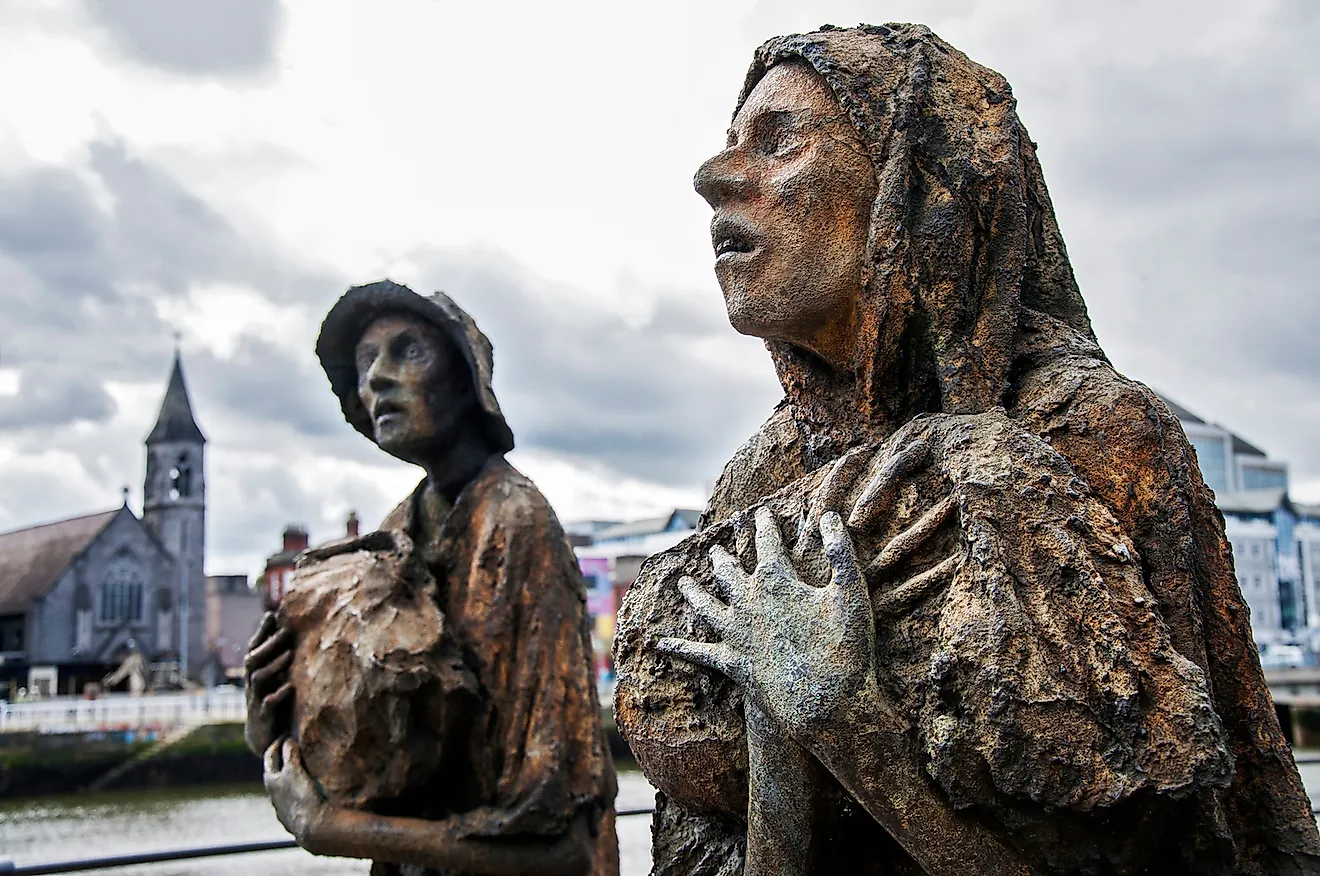
- Famines have affected every inhabited continent in the world but the frequency and location of the famines have shifted with the times.
- Famine rates had been decreasing until 2017, when they saw a rise with famines occurring across Africa.
- Famines can be caused by natural disasters and severe weather changes, political unrest or policy, war, industrialization or any combination of factors.
- The deadliest famine in history took place in China between 1959 and 1961. This catastrophe has often been referred to as one of the greatest man-made disasters, though regional droughts did play a part.
Famines have existed throughout time all over the world and in varying degrees of severity. Characterized by a lack of sufficient food supply, they can be caused by any number of factors. Everything from inflation to warfare, political unrest, natural disasters or crop disease can spark a famine causing widespread consequences to a region or country’s population. Famines have affected every inhabited continent in the world but the frequency and location of the famines have shifted with the times.
A Brief History And Causes
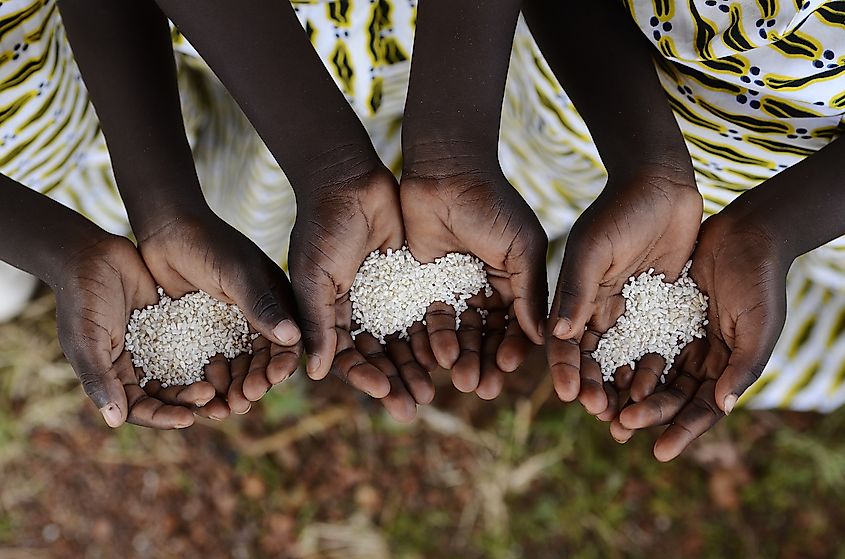
Though the severity of famines has decreased with modernity, and the most severe ones took place centuries ago, famines are still alarmingly common in our modern world. Thankfully, United Nation's efforts and other forms of aid have helped to reduce death rates when famine does occur, but the consequences of famines are still severe. Often times corrupt governments, wars, and other politics can inhibit aid and exacerbate situations. For this reason, conflict is the main factor in most modern day famines.
Additionally, famine often came about in the 16th, and 17th centuries due, in part, to rudimentary farming techniques. As farming developed and progressed, commercialization increased. Because farmers often lived on land owned by a landlord, necessity created an increase in farm yields. This meant that while formerly a family may have grown only the food they themselves needed, most farms now had surplus crops - whether commercial or industrial. As societies grew and modernized, causes of famines shifted. While improved farming techniques and crop yields staved off some problems, industrialization, government control and warfare brought new concerns to the table. The 20th Century saw famines with exceptionally high casualties. This was due in part to dictatorships and various wars and conflicts which cut off food supplies and set embargoes that limited imports and exports.
Famine rates had steadily been decreasing globally up until 2017. Unfortunately the world has now seen the resurgence of famine, namely in Africa. These have mainly been in northern and eastern Africa, within the countries of Nigeria, South Sudan, Yemen and Somalia, where risk of starvation has dramatically spiked. Below is a list of ten of the most deadly famines throughout history, from 1700’s to the cusp of the new millennium.
The Great Chinese Famine 1959-61
The deadliest famine in history took place in China between 1959 and 1961. This catastrophe has often been referred to as one of the greatest man-made disasters, though regional droughts did play a part. The famine was caused by a combination of political and social factors brought about by the People’s Republic of China. These policies, namely the Great Leap Forward which began in 1958, and the people’s communes, created a deadly environment that cost tens of millions of lives. These policies included drastic changes to farming policy and prohibited farm ownership. Additionally, peasants were redirected from agriculture in favour of iron and steel production, reducing farm outputs drastically. All of this lead to a significant reduction in China’s grain production, and a widespread food shortage. While governments reported some 15 million deaths, experts agree that the death toll was significantly higher, with numbers ranging anywhere from 20 to 50 million deaths.
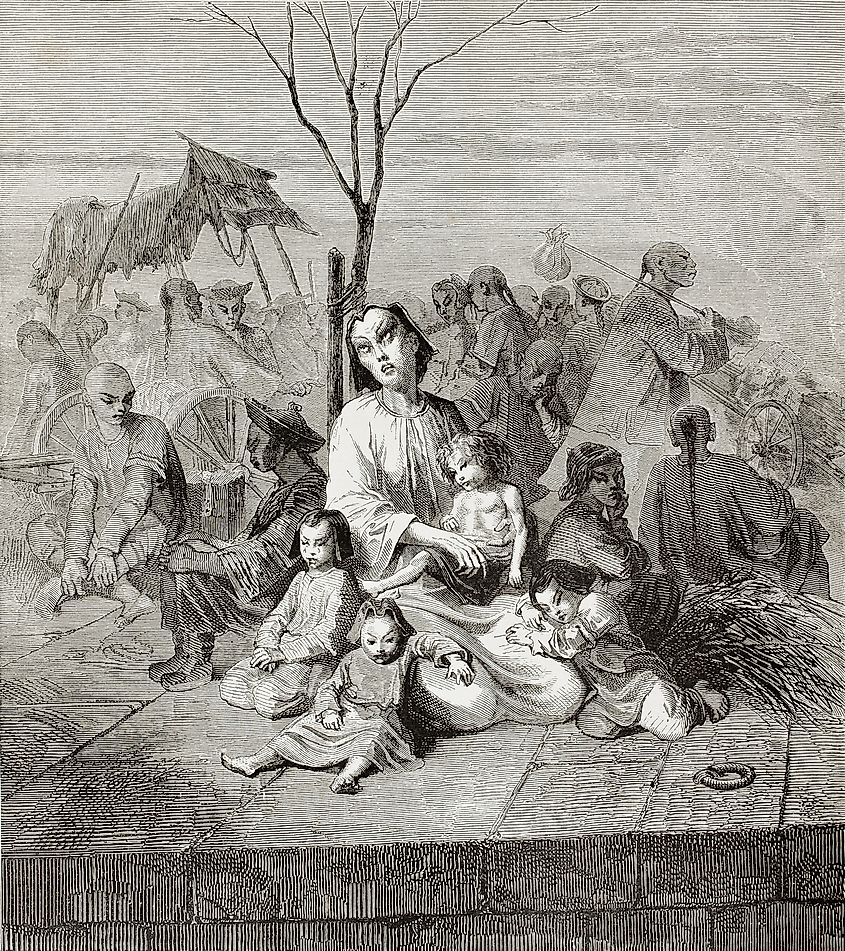
Chinese Famine of 1907 In 1907
Northern China experienced a famine which claimed up to 25 million lives. This famine came about due to extreme rains which hit during growing season and washed away vast numbers of plants and prevented food production. Nearly 40,000 square miles of land was flooded during this time, in the Honan, Kiang-su and Anhui provinces. Roughly 10% of Northern China’s population was lost in this catastrophe.
Chalisa and South India Famines 1782-84
The Chalisa famine took place in Northern India from 1783 to 1784 and followed a similar famine which had occurred the previous year in South India. Unusually warm conditions swept through India in 1780 and persisted for the next few years, causing a severe draught. With the excess heat and lack of rain, crops and food supplies died out or were unable to grow, quickly causing a food shortage. Over the course of both famines, more than 11 million lives were lost, and populations were drastically depleted, especially in the Delhi territories.
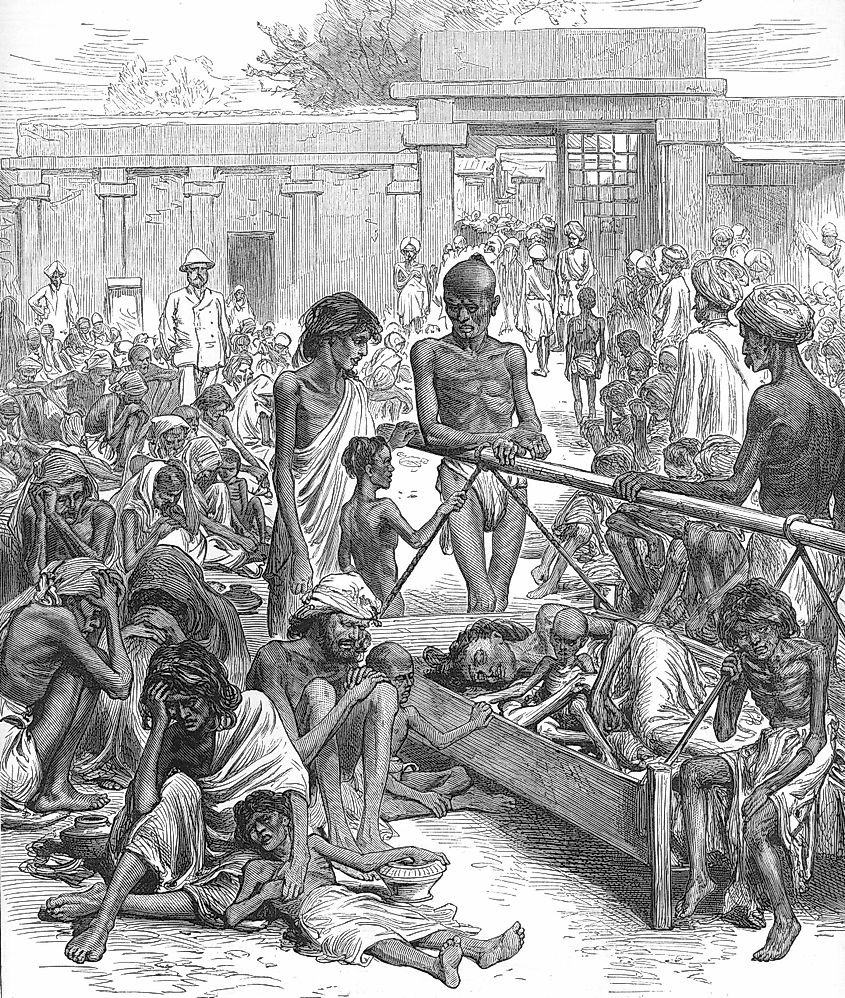
Bengali Famine of 1770
In 1770 Bengal was hit with a devastating famine that wiped out roughly a third of its population. The famine was brought on by extreme draught and crop shortages. The area was governed by the East India Trading Company at the time, and their focus on profit greatly exacerbated the problem. Despite knowledge of the worsen farming conditions, taxes were increased and crops shifted away from rice to the more profitable opium and indigo. This meant that not only were farmers struggling to produce food, but what was available was priced outside of their reach. As a result of this poor management, roughly 10 million people starved to death.
Soviet Famine (Holodomor) 1932-33

In 1932, the Soviet Union, then ruled by Joseph Stalin, saw a man made famine that killed millions in Ukraine, Kazakhstan, Northern Caucasus and Volga Regions. All under Soviet rule at the time, these regions saw drastic declines in their populations between 1932 and 1933. The famine struck hardest in the grain producing areas as leaders looked to industrialization instead of agriculture. Crop farming was also prohibited, and food supplies confiscated, causing mass starvation. The details of this famine have been widely disputed and because of this, death tolls are debated. In 2003, the United Nations declared that between 7 and 10 million people died due to starvation or complications thereof, but researchers have since adjusted this estimate to between 3.5 and 7.5 million.
Russian Famine 1921
World War I and the year leading up to it hit Russia hard. Political unrest and civil wars through 1917 lead to a bloody revolution and the start of Soviet rule. Food supplies were confiscated or redirected to Bolshevik soldiers, leaving civilians to do without. This in turn saw a decrease in food production as some chose not to cultivate crops they would not be allowed to eat. While policies were being put into place to ease tensions between peasants and authorities, the Volga basin experienced terrible crop failure. As a result, some 5 million Russians lost their lives.
Bengal Famine 1943
The second world war hit Bengal hard, with a number of increasingly devastating factors leading to a widespread famine. The Bengal province was then under British rule, and it was their lack of action that made things much worse. The Bengal economy had relied heavily on agriculture at the time, but productivity staled as the population increased, causing both a shortage of work and food.

Inflation followed swiftly, and left many unable to pay for sufficient food supplies. The government denied any existence of a famine, and Prime Minister Winston Churchill offered little aid. Eventually humanitarian aid and a fruitful harvest helped to lift the famine, but by then 2 - 3 million lives were lost.
North Korean Famine 1994-98
One of the most devastating famines of modern times, the North Korean famine or March of Suffering, lasted between 1994 and 1998. This famine occurred due to a combination of natural causes and dictatorship rule. 1995 saw large flooding, destroying over a million tons of grain. North Korea’s policy of ‘military first’ also meant that resources, manpower and food supply were directed to the military over civilians, meaning, in many cases, that civilians who could not forage or fend for themselves simply starved to death. Foreign aid did help to reduce the death toll, and nearly 3.5 metric tons of food donations were received. Despite this, it is estimated that some 3 million lives were lost, though the numbers were said to be significantly underreported by North Korean officials.
Persian Famine 1917-19
World War I brought a period of famine and sickness throughout much of Persia, then ruled by the Qajar dynasty. One of the leading factors in this famine was the successive years of severe droughts which greatly reduced farming outputs. Additionally, what food was produced was confiscated by occupying forces. Changes to trade as well as general unrest during the war heightened fears and created hoarding situations which further exacerbated the situation. This, in conjunction with poor harvests and war profiteering combined to form a famine which spread quickly throughout the area. Death toll numbers are widely debated, but most scholars estimate around 2 million lost their lives due to famine or resulting diseases.
Irish Potato Famine 1845-1853
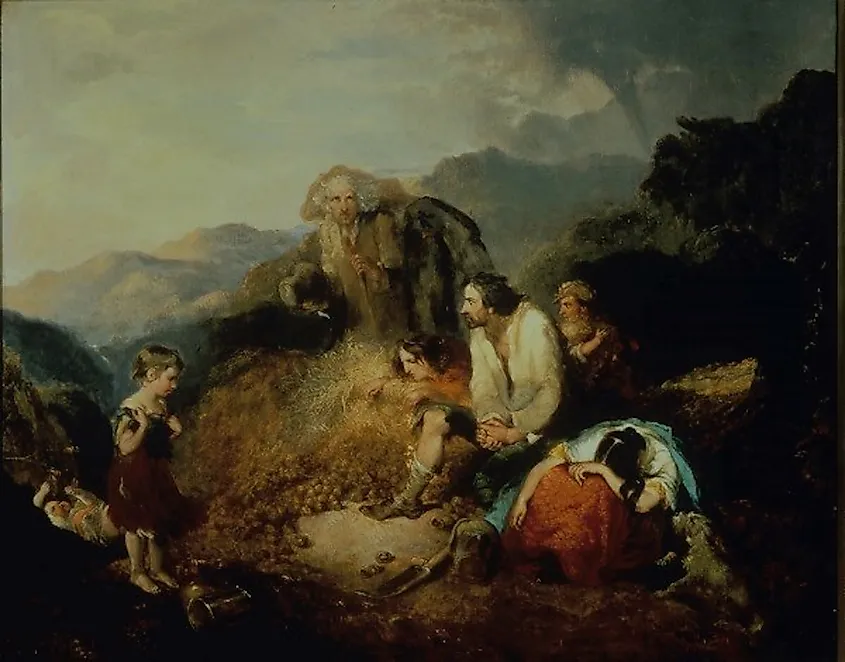
Another one of the worst famines is the Irish Potato Famine which occurred between 1845 and 1853. It was caused by a crop disease which killed off much of Ireland’s potatoes. This was the largest food source at the time, especially for the poorer citizens, and the lack of potatoes meant a drastic lack of food. With crops limited, Ireland needed help in order for their people to get enough food to survive. However, British national ships prevented aid from other nations, thus causing further death and starvation. An estimated 1 million people died coming at a high cost to the Irish population. Nearly 25% of the country’s citizens were wiped out, with some 1 to 2 million others fleeing to North America.











